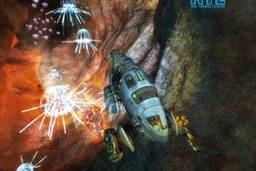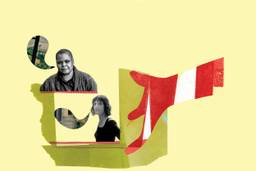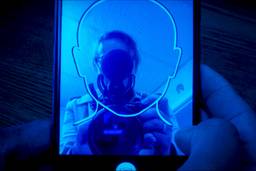Creating the 21st Century Library
The Prelinger Library eschews the Dewey Decimal and Library of Congress systems, and is organized instead by what Megan Shaw Prelinger calls “a map of my brain”
Aaron Sarver

When you enter the Prelinger Library in San Francisco, the first thing you notice is “rock star” librarian Nancy Pearl – in action figure form. It’s the first hint that you’ve stepped inside an unconventional library. Megan and Rick Prelinger’s vision of engaged learning is at odds with the weighty atmosphere that often pervades spaces containing 40,000 items – ranging from books to maps to films – intended for research purposes. Rick first achieved fame in the archivist world when his collection of 60,000 16mm educational films, known as the Prelinger Archive, was purchased by the Library of Congress in 2002.
Three years later, after the dot com bust had dragged down commercial rents, the couple leased a 1,700-square-foot warehouse space in San Francisco’s SoMa (South of Market) neighborhood and moved their massive book collection out of storage. (This is what happens when two archivists gets married.) Four long, 15-foot-high rows of bookshelves loom over guests, but the extraordinarily high ceilings make the book towers less imposing. Boxes of “ephemera” sit neatly stacked up against the far left row. And the back of the library has an unruly pile of boxes of books waiting to be shelved.
The Prelinger Library eschews the Dewey Decimal and Library of Congress systems, and is organized instead by what Megan calls “a map of my brain.” Books are grouped by topic, in a related fashion. Western U.S. history merges into agriculture, which merges into urban planning. Since space is limited, there is a decent amount of churn. Under-used items are phased out and new ones brought in. During my visit, a few boxes of the recently defunct magazine Punk Planet had just arrived. With funding from the Internet Archive, the Prelinger Library is digitally scanning the books in its collection that are not under copyright protection for use on archive.org.
In These Times recently sat down to talk with Megan Shaw Prelinger.
What makes someone start her own library?One of the multiple barriers put in place by major research libraries is that they don’t enable ordinary people to make use of extraordinary materials. So the idea of making a library was fed by my experience that college and university libraries’ closed stacks inhibit browsing and the process of random discovery. I always felt like I had my best ideas or developed my best projects when I was wandering and looking for certain things, but then finding things I didn’t expect.
How did this “process of random discovery” inform how you structured your library?Even at public libraries, the subjects I was interested in were scattered. They were either not present at all or organized in a way that made no intuitive sense to me. Neither Dewey Decimal nor Library of Congress as an organization method made any intuitive sense to me. It’s like organizing your record collection or book collection at home. I’ve always used organization as a way to create juxtapositions and cluster little sets of coherency in my own book collection in a way that pleases me.
Is it fair to say that your organization of materials is an implicit critique of the way people are taught to learn or to research? That you want to explore ideas in the way that someone like Walter Benjamin did, rather than through a rigid system imposed by very structured institutions?I think it’s an explicit critique. We tell people that you’re going to find things “intershelved.” You’re going to find government documents next to nonfiction and fiction. Materials are clustered by subject and we want people to have the shelf be an experience unto itself.
If it doesn’t occur to you or it isn’t explained to you that printed ephemera, historic magazines, photograph collections, maps, fiction can all be equally meaningful to your area of inquiry, you might not know to look for those things. So we try to create a browsing experience that can’t be had anywhere else. People come in and ask, “There’s no computer?” They have been trained to formulate a query rather than just engaging the shelves unmediated.
How do you think the digitization of books should effect how libraries manage their print collections?In the library and document preservation worlds, there exists a concern that the growth of the digital environment will result in the end of print, and that books and newspapers need to be rescued from the digital future. I don’t believe that. Books as artifacts will always have value apart from their digital counterparts.
Yes, the online environment obviously offers mass dispersal into the world and that’s not possible in a print library environment. But part of our library project is about collapsing the polarization between print and digital, and looking toward a third way where a library can be a hybrid analog-digital space. Books are both retained and valued, and where a digital collection exists, maybe it allows more freedom with what the analog collection can do, because you can always do a keyword search of the digital collection. Maybe the benefits of one liberate the other.
How much consideration does the Prelinger Library give to creating a public space where scholars and regular patrons can meet each other?A lot of living and contemporary authors donate materials to the library. People will pick up a book and say, “I didn’t know about this book,” and we’ll tell them the author is a professor at Berkeley and that he has said you could go talk to him. When you’re browsing at a terminal, you’re not going to bump elbows with someone who’s interested in the same things.
Are there any specific things you’re looking to add to the collection?We look to preserve the historiography of underreported historical narratives – primarily North American because that’s our history. Usually when things like that become available, we want them.
With 1,700-square-feet of space we can’t position ourselves as rescuing all print. But with something like the Bureau of Indian Affairs records [which the Prelinger Library recently received from another library that was about to discard them], that was very clear. Talk about underreported historical narratives – you can hardly get more underserved than Native American cultural history. There are Bureau documents from the 1870s when white ethnographers lived among Native Americans and wrote, “We think most of the Indian raids on the neighboring white settlement camps are being perpetrated by white settlers dressing up as Indians and robbing their neighbors.” What happened? That idea – that observation – has been buried, dismissed and ignored for 130 years. When you read things like that, it legitimates the act of rescuing these documents and makes it even more urgent to do so.
Copyright has come into play in digitizing works. You were part of the lawsuit Kahle-Prelinger v. Gonzalez that was about orphaned works. Can you explain what the term orphaned works means?In the United States, everything published prior to 1923 is in the public domain and everything published since 1963 is automatically under copyright. So there’s a grey area between ‘23 and ‘63 where only about 15 percent of all copyrights were renewed. So we’re able to digitize 85 percent of stuff in that 40-year period. Large changes in the law in 1998 extended copyright, so even if the author elects to let their work enter the public domain, the government automatically renews that copyright.
Now copyright is very difficult to opt-out of. It’s life of the author plus 70 years. If the rights-holder no longer exists and the institutional author, say a textbook company, is dissolved, then the copyright laws protect no one. In a lot of cases, works being digitized bring authors new audiences that they didn’t have before. So our argument is that existing copyright renewal laws do a disservice. We want the opportunity to digitally disseminate works that have been abandoned by their authors.
Are there any specific works that you think need to be digitized so they can be available for research?Textbooks and songbooks. Tour guide books that explain how to go on excursions and investigations. If those were digitized, we could layer a map from 1965 onto a map from 1945 and trace landscape changes. You can do that for earlier years, but history becomes locked up in 1963.
So if an author is deceased and his or her books are out of print, it is still illegal to digitize them, even though there are a dwindling number of physical copies of the work?Right. That’s tragic. It doesn’t serve the authors. The legislation was devised to serve corporate interests. Yes, there are authors who are selling millions of books who want their copyrights to be held in their family in perpetuity. They should have that right. All we want is to be able to digitize works if we’ve done due diligence to locate an author or a rights-holder and if that rights-holder no longer exists or is supportive of digitizing the work.
Like other librarians, do you see yourself as a defender of civil liberties?Yes and no. As an unincorporated library, we were never subject to the Patriot Act. In a broad sense, you can view the Prelinger Library as a democratizing project. Pushing history out of dusty corners and making it relevant and usable to people doing work today.
To me the idea of a library as an arcane space and privileged space, a space separate from relevance to everyday life, is wrapped up in the general historical trend of anti-intellectualism. Libraries should be social spaces and idea playgrounds – places where people are free to get excited about ideas.






